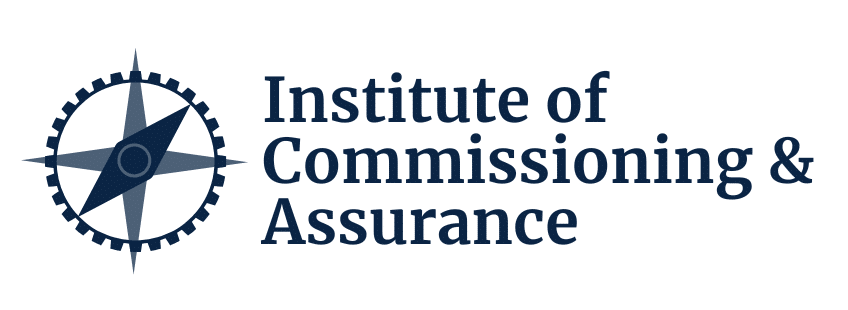The best time to plan for commissioning is right at the beginning of your project. Yes, it is, at the same time that planning for design and construction are taking place. But let’s face it—that doesn’t always happen. Projects are busy; there’s lots going on, and everyone’s focused on the immediate tasks of design and construction. Commissioning planning often gets deferred until later in the project. So, when’s the second-best time to plan for commissioning? Right now.
What’s the best method to plan for commissioning at the last minute?
So, the reality is projects are busy, and commissioning doesn’t always get planned at the beginning like it should. Project teams often find themselves with commissioning approaching quickly—maybe only 5 or 6 months away—and then they start realizing, “Man, we better start planning for commissioning!” They recognize they’re running out of time and need to get things done fast.
So, what’s the best way to plan for late-stage commissioning? There are nine things you need to do, and I’ll go through each one of them.
- Systematize Your Project
It’s very likely that the project team has been working with the project WBS (Work Breakdown Structure) that was originally structured at the beginning of the project. However, that doesn’t necessarily align with the subsystems and systems for how the project will be started up during commissioning and startup. There’s a process required to systematize your project.
What does that mean? Systematization means taking all the activities in your project—let’s say, for example, there are 30,000 activities—and grouping them into what would be a functional system, a group of equipment that functions together to perform one intended input to your overall plant process. That system includes all the tagged pieces of equipment required for that system to function and all the documentation needed to support it.
We go through all the activities and tagged pieces of equipment on the project and create groups of these items to chunk the project into these groups of tasks and rules, and then call each one of those a system. That system will work with the construction groups for handover in a particular sequence.
- Develop Mechanical Completion Packages
Once systematization is complete, the second task is to develop your mechanical completion packages. A mechanical completion package will define what makes up each system. It will list all the tagged pieces of equipment, related documentation, maintenance records, quality inspections, quality dockets from construction groups, ITPs (Inspection and Test Plans), and everything required from a documentation standpoint that supports that group of equipment. This defines your mechanical completion package.
You’ll have several mechanical completion packages on your project, each forming a subsystem or system that will eventually build the entire plant process into one functional plant system.
- Negotiate with Construction Groups
Once you’ve systematized your project and developed your mechanical completion packages, your third activity is to discuss with your construction groups and negotiate when they can complete each of these packages. There will definitely be a negotiation because if this isn’t already defined in your contracts, construction groups have likely determined their own sequence for finishing the work, which may not align with how the systems will be commissioned and started up to achieve your project in-service date.
Some requests may be accommodated, while others may not, especially if they put construction work out of sequence. Regardless, negotiation between construction groups and commissioning groups is necessary to agree on when each mechanical completion package can be completed and in what sequence.
- Select Your Commissioning Software
Once mechanical completion dates are agreed upon, the next task is to select your commissioning software and set it up. The systematization and completion package data should be loaded into the commissioning software, which will help define how the project is structured and track subsystem turnovers from construction. There are about 27 commissioning software packages on the market, so review and select the one that best fits your project.
- Prepare Your Checklists
Your next task is to prepare your checklists. If you’ve selected the right commissioning software package, many checklists for common equipment (motors, pumps, valves, etc.) may already be built into the software. If not, you’ll need to create these checklists from past projects or OEM (Original Equipment Manufacturer) manuals, which can be labor-intensive.
Checklists are used for pre-commissioning. During system-level testing, you’ll follow commissioning procedures to verify system functionality.
- Write Commissioning Procedures
Commissioning procedures define how you’ll test each system and subsystem. These procedures will be based on the process control narrative and should exercise all operating modes and fault conditions to confirm everything functions correctly as a system.
- Hire and Train Your Team
You’ll need a team to execute these checklists and procedures. You may hire experienced commissioning individuals or train new team members so they understand the commissioning process.
- Develop Turnover Packages
Throughout commissioning, various documents will be compiled into turnover packages, which are handed over at the end of the project. Proper use of commissioning software can streamline this process, making it far more efficient than the old method of compiling binders of documents.
- Prepare for On-Site Testing
Finally, take a deep breath and prepare for on-site testing. Once this phase begins, everything moves quickly. All the preparatory work mentioned earlier must be completed beforehand because, during on-site testing, the focus will be strictly on execution.
In summary, while the best time to plan these activities is at the beginning of your project, if that doesn’t happen, you still have time to get it done—just not much! If you’re looking for guidance to execute these tasks quickly, consider consulting services, which can help you prepare for commissioning in a short amount of time. For more information, visit icxa.net.


Recent Comments